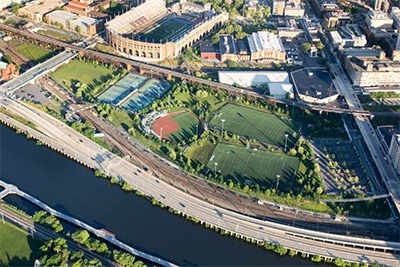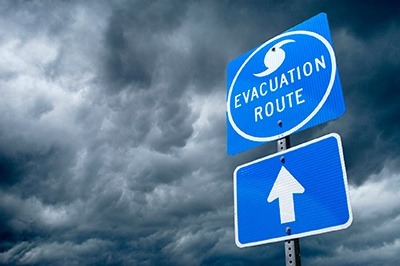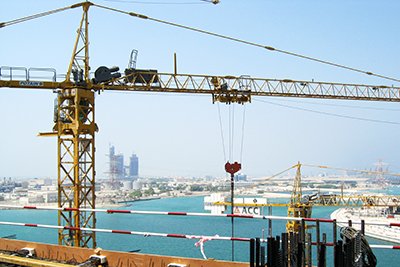The New Jersey Department of Environmental Protection (NJDEP) recently proposed a new rule aimed at enhancing inland flood protection measures in the state (New Jersey Administrative Code [NJAC] 7:8 and 7:13). The proposed rule is intended to mitigate the effects of increased extreme precipitation events due to climate change, such as Tropical Storm Ida, which, in September 2021, caused widespread damage to communities and infrastructure in fluvial flood areas (areas where rising waters in lakes, rivers, or streams cause flooding).
The proposed NJDEP Inland Flood Protection Rule has significant implications for owners and developers of manufacturing, commercial, and industrial properties, who need to understand how the rule may impact their operations. In this article, we will discuss the key aspects of the proposed rule and its potential effects on real estate owners and developers.
Key aspects of the proposed New Jersey Inland Flood Protection Rule
The proposed NJDEP Inland Flood Protection Rule outlines requirements and standards for new construction projects, as well as for the modification of existing buildings in flood-prone areas. The proposed rule would not apply to new construction and certain renovation projects that:
- Would require and have received approval for flood hazard area (FHA) applications submitted prior to the effective date of the rule.
- Have received all federal, state, and local approvals required for construction.
- Have commenced construction activities prior to the effective date of the rules.
- Were not considered part of a regulated FHA prior to the effective date of the rules.
Key aspects of the proposed rule include the following:
- The rule sets the required design flood elevation for occupiable building space and critical equipment to include a 2-foot factor of safety above 100-year fluvial base flood elevations mapped by NJDEP, (there is currently no elevation increase required), and a 3-foot factor of safety above 100-year fluvial base flood elevations mapped by the U.S. Federal Emergency Management Agency (up from the 1-foot elevation increase required currently). Tidal flooding requirements remain unchanged as part of this rule.
- As under current requirements, the design flood elevation can also be determined by a licensed engineer. The proposed rule would require the licensed engineer to also adjust for future precipitation depth using projected future rainfall to calculate the 100-year peak flow rate, plus a factor of safety, as part of a hydraulic analysis. The future rainfall would be calculated using future precipitation depth adjustment factors published for each county by NJDEP to account for climate change impacts.
- Stormwater best management practices (BMPs) will be required to manage runoff from increased current design storms (i.e., hypothetical storm events) as well as future design storms, using current and future precipitation depth adjustment factors published for each county by NJDEP.
- Stormwater runoff can no longer be calculated using the rational or modified rational methods.
- Permits-by-rule, general permit, individual permit, or general permit-by-certification will be required to comply with applicable construction standards of the Uniform Construction Code (NJAC 5:23) and federal flood reduction standards (44 Code of Federal Regulations Part 60).
Impacts for property owners and developers
The proposed NJDEP Inland Flood Protection Rule will likely have significant impacts on commercial, manufacturing, and industrial property owners and developers. These effects could include:
- Higher construction costs. Compliance with the new flood protection standards and stormwater BMPs will likely increase construction costs, especially for projects in flood-prone areas. Developers may need to invest in additional engineering, design, and construction measures to meet the new requirements, such as floodproofing or elevating critical equipment and increasing stormwater detention capacity.
- Delays in construction. Meeting the new flood protection standards may require additional time for design, approvals, and construction. This could result in delays in project timelines, which can affect project profitability.
- Changes in property values. Properties located in flood-prone areas may experience changes in value because of the new flood protection standards. Buyers and sellers may need to factor in the cost of compliance with the new requirements when negotiating deals.
- Compliance challenges. Compliance with the new flood protection standards may challenge some real estate owners and developers, especially those with existing buildings in flood-prone areas. Retrofitting existing buildings to meet the new standards may require significant investment, which could be an obstacle to compliance.
How owners and developers can prepare for the proposed New Jersey Inland Flood Protection Rule
The proposed rule represents a significant development for manufacturing, commercial, and industrial properties in the state. Stakeholders should be aware of the new requirements and understand how those requirements could affect their operations. By proactively considering property flood exposure and evaluating stormwater management practices and flood resilience measures, real estate owners and developers can better prepare for compliance and mitigate any potential negative effects on their operations.
Please contact the authors of this article for more information on this rule and how to prepare.
Published: 5/19/2023
Author

Senior Associate, Climate Resilience Specialist




